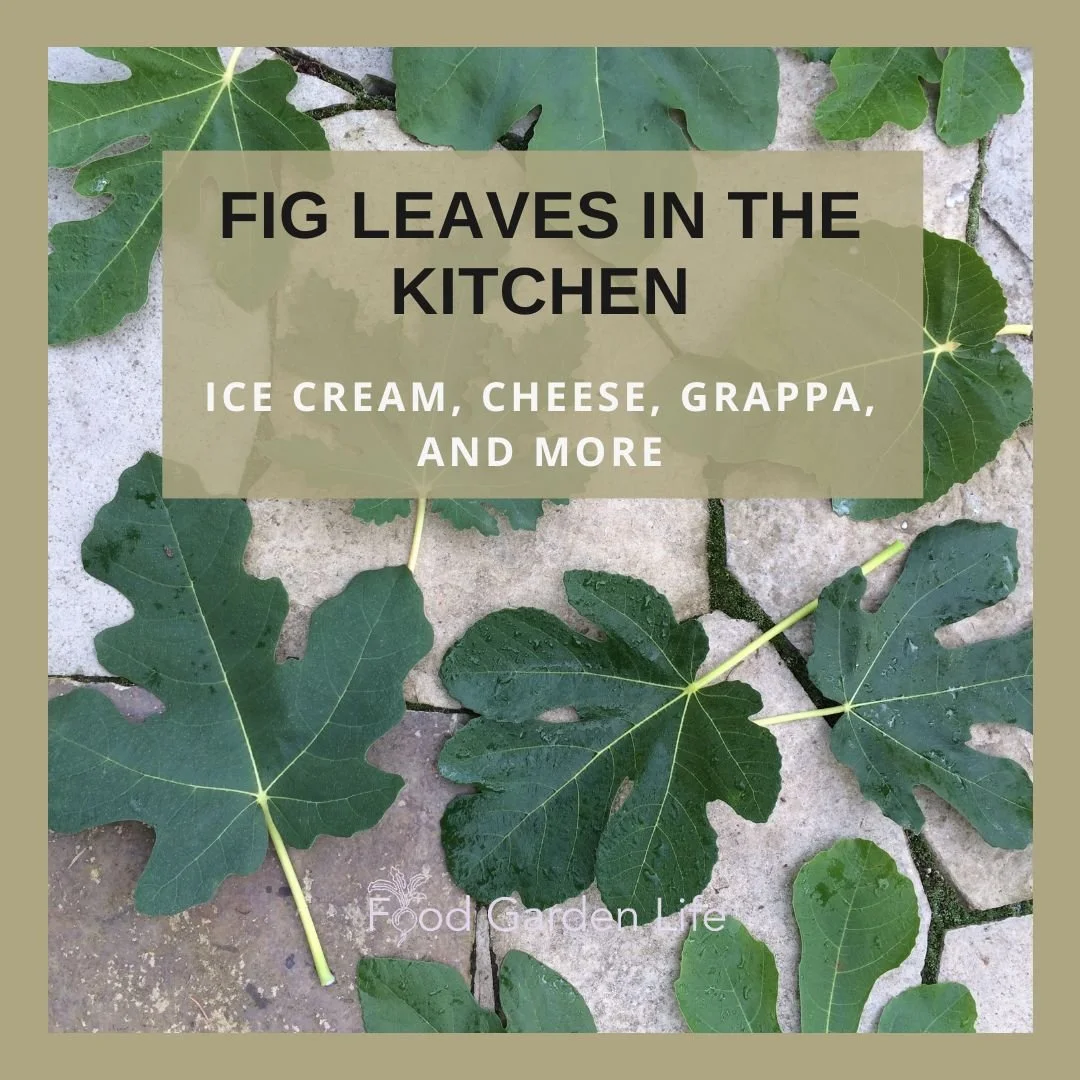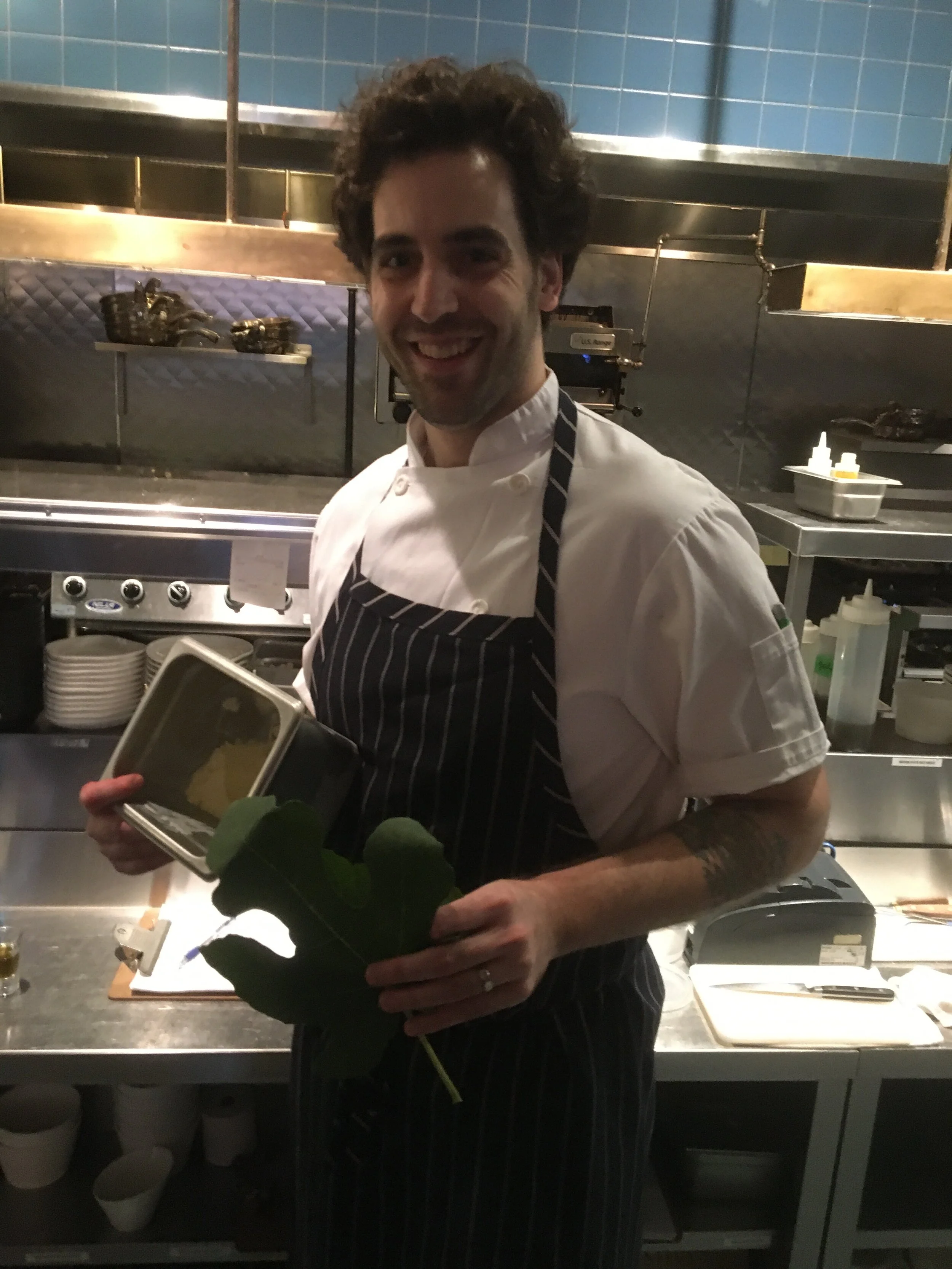Fig Leaves in the Kitchen
By Steven Biggs
Fig Leaf Ice Cream
It starts with an e-mail. The subject line reads, “fig leaves.”
Expecting the usual early-fall question about fig rust, I am surprised when I open the e-mail and read:
“I am looking for fig leaves to make dishes with at my restaurant (fig-leaf ice cream, jelly, savoury sauces, custards etc.) Is there any possibility of getting some from you, before they fall for the winter?”
Sweet Smell of Fig Leaves
I have never tasted anything made using fig leaves. But right away I think of the sweet, slightly earthy, coconut-like smell that wafts over from the figs trees in my garden on a hot day.
So it was that Chef David Salt drops by my garden for some fig leaves in early October, before they get nipped by frost. He tells me that when he was a chef in London, England, he knew where to go for fig leaves. But here in Toronto, he hasn’t been able to find a supply…until now.
He fills a couple of bags with fig leaves, which he will freeze until he is ready to use them. Then we agree that I’ll drop by the restaurant some time to taste his fig-leaf creations.
Get Your Fig Trees Through Winter
And eat fresh homegrown figs!
Tasting Fig-Leaf Dishes
I stop in at the restaurant a couple of weeks later to try a fig-leaf grappa, a fig cheese, and a fig-leaf ice cream.
Fig-Leaf Ice Cream
Cooking with fig leaves
David explains that this light coloured ice cream is made with the extract from steeped fig leaves. It’s lucky that I have come when I do, because there is only a little bit left in the container. At first I don’t taste the fig leaves, but then, slowly, a gentle fig-leaf flavour comes through at the back of my mouth.
David finds the fig-leaf flavour goes well with something sweet; I agree.
Fig-Leaf Cheese
While I’m tasting the ice cream, Sous Chefs Udit and Mandar go to get a ball of fig-leaf cheese, and then peel back the cheese cloth so that we can all taste it.
David’s fig-leaf cheese, while unintentional, is delicious. I tell David that I have heard of fig sap being used to make a yogurt-like dairy product and as a rennet substitute for making cheese.
Chef David Salt. The fig-leaf ice cream was a hit.
This ball of cheese is sweet because it was originally intended to be a batch of ice cream. As David made a batch of fig-leaf ice cream, it split on him—so he strained the curds to make this fig-leaf cheese.
Fig-Leaf Grappa
I can’t drink too much of the fig-leaf grappa as I am on my way to teach a college class. Pity. David says it was an incredible green infusion when they first made it, but the colour faded within a day. I don’t smell anything, and I don’t taste the fig leaves at first. But a moment later, the fig-leaf flavour comes through—again, at the back of my mouth. It’s a flavour that lasts, so I continue to enjoy it as I walk to class.
But What About…
If you grow figs, you’re thinking as you read this that they don’t always smell nice.
I find that in the fall, as fig trees drop their leaves and go dormant, there can be a strong smell, which some people describe as cat pee. (The other time I’ve encountered that smell is when I leave fig plants in my car for too long on a hot day.)
David got those leaves early enough that there was only the sweet, slightly earthy, coconut-like smell that wafts over from my figs trees on a hot day.
FAQ Fig-Leaves
Can you eat fig leaves?
You don’t actually eat the leaf, but extract the flavour from the leaf (as in a syrup or panna cotta) or use the leaf to flavour a dish (as in meat wrapped and cooked in a fig leaf.)
Can you make fig-leaf tea?
Some people dry fig leaves for use in teas.
More About Figs and Fig Trees
Articles and Interviews
Online Fig Masterclass
Get Your Fig Trees Through Winter
And eat fresh homegrown figs!




